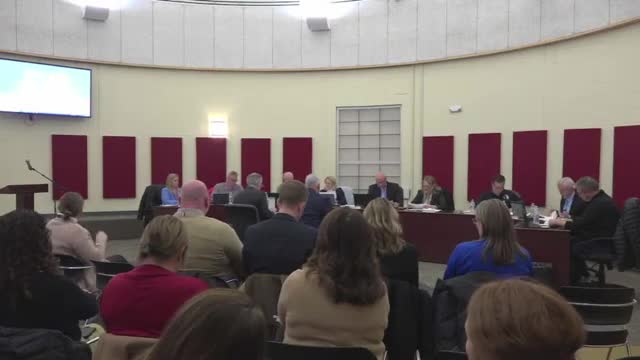Dunlop District faces budget challenges as expenses outpace revenue growth
February 23, 2025 | Dunlap CUSD 323, School Boards, Illinois
This article was created by AI summarizing key points discussed. AI makes mistakes, so for full details and context, please refer to the video of the full meeting. Please report any errors so we can fix them. Report an error »

In the dimly lit conference room of Dunlap School District, board members gathered to discuss pressing financial matters that could shape the future of education in the community. The atmosphere was charged with a sense of urgency as they reviewed the district's financial profile, focusing on the critical balance between revenues and expenditures.
A key point of discussion centered on the district's reliance on real estate taxes, which emerged as the primary source of revenue. Board members noted that while salaries and benefits constitute a significant portion of expenses, the overall financial health of the district is increasingly strained. Over the past few years, expenses have consistently outpaced revenues, raising concerns about sustainability. “Expenses exceeding revenues is a path that can’t be sustained long-term,” one member remarked, highlighting the broader challenges faced by educational institutions in the wake of rising costs.
The board examined detailed charts and graphs that illustrated the district's financial trajectory. They noted that while the estimated operating expense per pupil stands at $11,007.54—significantly lower than the state average—this figure reflects a troubling trend of increasing costs, particularly in salaries. The discussion revealed that many districts are grappling with similar issues, as inflation and other economic pressures continue to impact budgets.
As the meeting progressed, members reflected on the district's capital outlay, which included recent projects such as roofing and paving improvements. These investments, while necessary, further complicate the financial landscape. The board acknowledged the importance of maintaining facilities but recognized the need for careful financial planning to avoid future deficits.
In a moment of introspection, the board considered the implications of their financial decisions on the community. “We’ve been talking about this for the last five to ten years,” one member noted, emphasizing the ongoing struggle to balance educational quality with fiscal responsibility. The conversation underscored a collective commitment to transparency, with suggestions to make financial documents accessible to the public.
As the meeting drew to a close, the board members left with a renewed sense of purpose. They understood that the path forward would require not only strategic financial management but also a collaborative effort to engage the community in discussions about the future of education in Dunlap. The challenges ahead are significant, but the board remains dedicated to ensuring that every student has access to quality education, even in the face of financial adversity.
A key point of discussion centered on the district's reliance on real estate taxes, which emerged as the primary source of revenue. Board members noted that while salaries and benefits constitute a significant portion of expenses, the overall financial health of the district is increasingly strained. Over the past few years, expenses have consistently outpaced revenues, raising concerns about sustainability. “Expenses exceeding revenues is a path that can’t be sustained long-term,” one member remarked, highlighting the broader challenges faced by educational institutions in the wake of rising costs.
The board examined detailed charts and graphs that illustrated the district's financial trajectory. They noted that while the estimated operating expense per pupil stands at $11,007.54—significantly lower than the state average—this figure reflects a troubling trend of increasing costs, particularly in salaries. The discussion revealed that many districts are grappling with similar issues, as inflation and other economic pressures continue to impact budgets.
As the meeting progressed, members reflected on the district's capital outlay, which included recent projects such as roofing and paving improvements. These investments, while necessary, further complicate the financial landscape. The board acknowledged the importance of maintaining facilities but recognized the need for careful financial planning to avoid future deficits.
In a moment of introspection, the board considered the implications of their financial decisions on the community. “We’ve been talking about this for the last five to ten years,” one member noted, emphasizing the ongoing struggle to balance educational quality with fiscal responsibility. The conversation underscored a collective commitment to transparency, with suggestions to make financial documents accessible to the public.
As the meeting drew to a close, the board members left with a renewed sense of purpose. They understood that the path forward would require not only strategic financial management but also a collaborative effort to engage the community in discussions about the future of education in Dunlap. The challenges ahead are significant, but the board remains dedicated to ensuring that every student has access to quality education, even in the face of financial adversity.
View full meeting
This article is based on a recent meeting—watch the full video and explore the complete transcript for deeper insights into the discussion.
View full meeting
